
The Most Toxic City in America
April 10, 2018 – The sun was beginning to set as we entered Picher, Oklahoma – a town that had been slowly destroyed by years of careless mining operations, and later dismantled by a large EF4 tornado. The EPA has declared Picher to be the most toxic city in the United States of America. It remains a ghost town, completely uninhabitable.
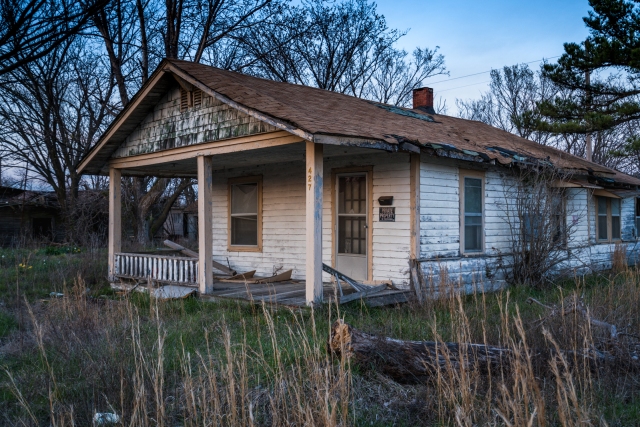
Unrestricted excavation took place over the course of more than a century, damaging the homes and eventually polluting the air and water in Picher. Due to numerous tunnels beneath the land, much of the area is said to be subject to collapse at any moment.
The roads are quiet, with almost zero traffic. Blocks sit empty, with most structures wiped clean from their foundations by the 2008 storm. You can still make out the neighborhood grids, which are now mostly overgrown. The roads have started to crack as Earth pushes through. It’s a sad sight when you think back to how lively the town was years ago. Though very little remains, you can still feel an eerie sense of life lost, and the memories this city must still hold for so many.



I walked through what remained of the city. Remnants of curtains swayed in the wind still clinging to shattered windows. Most doors had been either knocked out of their frames, or ripped to shreds by strong winds from the huge tornado that tore through the town in May of 2008. In one spot, a tree was now growing directly in the doorway. Sun shone through the empty windows, and holes in ceilings. The area was quiet, full of a melancholy peacefulness. Pieces of a past life were scattered around the town; children’s toys, clothes, furniture. This was what remained since the cleanup and demolition of most structures in 2014.


The massive piles looming over the edge of Picher are known as chat. Chat is a toxic metal-contaminated combination of siliceous rock, limestone, and dolomite that results as waste during lead-zinc milling during mining.
Back in 1913, Harry Crawfish discovered lead and zinc on an empty piece of land in Oklahoma. Harry had developed a townsite overnight, naming it Picher, in honor of O. S. Picher – the owner of Picher Lead Company. Five years later, the city was incorporated, and by 1920, had a population of 9,726. Continuing rapid growth, the population peaked at 15,252 in 1926, but was followed by a constant decline in all years to come. Population decline was due to decreased mining activity. By 1960, Picher’s population had fallen to only 2,553.
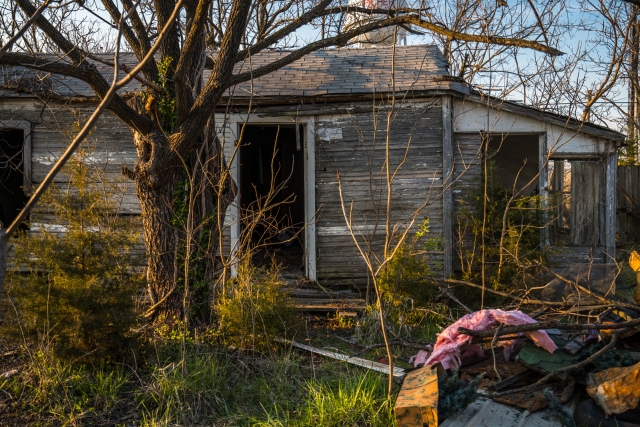
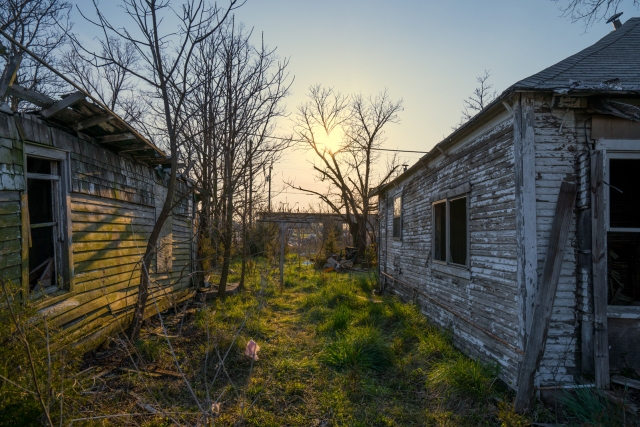
Picher was once the most productive lead-zinc mining areas in the Tri-State district, producing over $20 billion worth of ore between 1917 and 1947. The US benefitted greatly from Picher during World War I, as over 50% of the lead and zinc used during the war were produced by the Picher district. Workers would travel by trolley from as far as Joplin, Missouri to work at the mines. Over 14,000 miners worked in mines, with over 4,000 working in mining services. Mining ceased in 1967, leading to even further population decline. Contamination in water resulted from over 14,000 abandoned mine shafts, 70 million tons of mine tailings, and 36 million tons of mill sand and sludge. The city faced a massive environmental cleanup that was practically impossible.
By the 1980s, the EPA put together the Tar Creek Superfund Site, including Picher, Treese, Kansas and Cardin, Oklahoma. The superfund site was established to identify and remediate these environmentally hazardous sites. Some remediation took place over the next 25 years, but it was realized that there were environmental hazards much more severe than they had thought before. The government decided to close Picher for good, and relocate its residents.
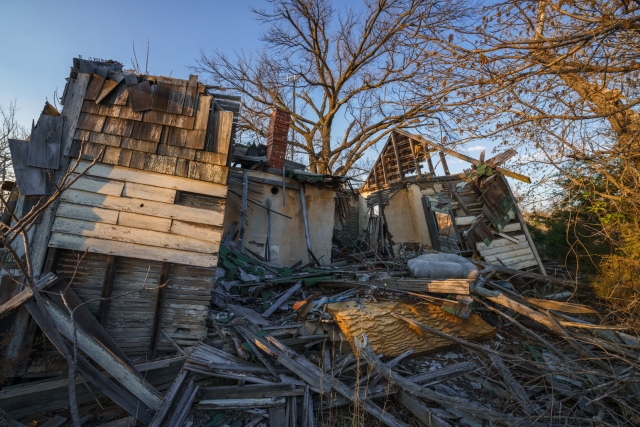

During studies, the EPA noticed that the dust blowing around through Picher contained zinc, lead, cadmium and other metals. By the 1980s, the metals had also seeped into groundwater, ponds, and lakes. Children had still regularly used these areas for swimming, which led to learning disabilities, among other problems in Picher children. By 1996, it was documented that 34% of the children living in Picher suffered from lead poisoning due to the environmental effects. Knowing that this could result in lifelong neurological problems, the EPA and the state of Oklahoma jointly agreed to a mandatory evacuation and buyout of the entire township.
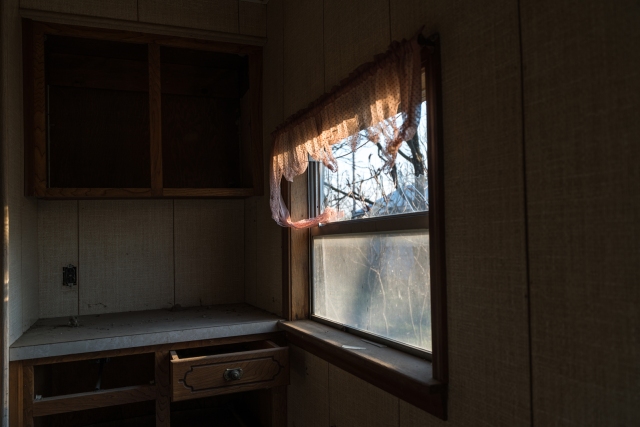
By 2006, an Army Corps of Engineers study had shown that 86% of Picher’s buildings were undermined so badly, that they could collapse at any moment. At this time, some people still remained in Picher, continuing refusal to move. On May 10, 2008 however, an EF4 tornado swept through the town, destroying 150 homes, accelerating the evacuation of remaining residents. Eight deaths were confirmed, including one child. Over 150 people were injured in Picher alone. The tornado caused extensive damage to 20 blocks of the city, flattening many businesses and homes. In its path of destruction, the tornado also picked up chat from the large piles, throwing it throughout the city. With an already existing plan to vacate the city, the government decided against any aid to rebuild homes. This storm was the final push for the government to buy out any remaining residents, and assisting them in relocation. National Guard troops were recruited by Oklahoma Governor Brad Henry to assist the hardest hit areas in Picher. With loss of power, the city was forced to go on a boiled water notice, which means that it is advised to bring water to a rolling boil for at least one minute before consumption to kill bacteria and viruses.

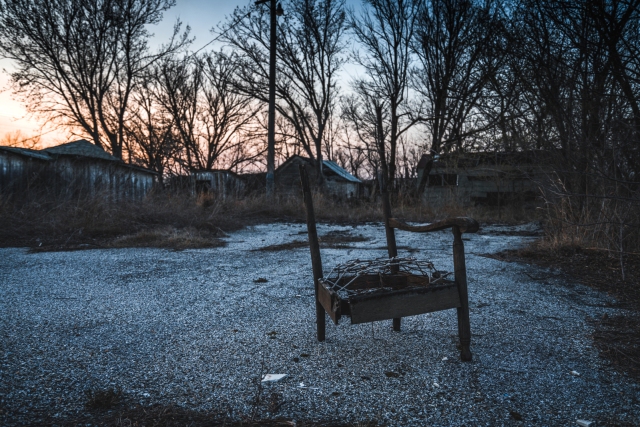

September 1, 2009 – the state of Oklahoma officially dis-incorporates the city of Picher. The city had ceased operations as a municipality, and all of the residents had been given federal checks to help them relocate elsewhere permanently. During the earlier 2000 census, population sat at 1,640, and at the end of 2010 had dropped to only 20, as Picher was too toxic to be inhabitable at this point.
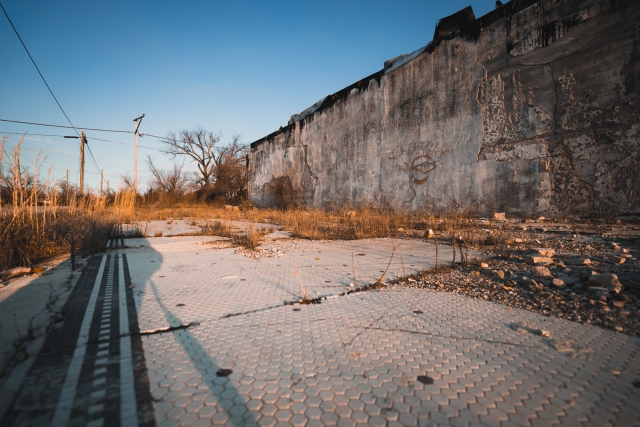

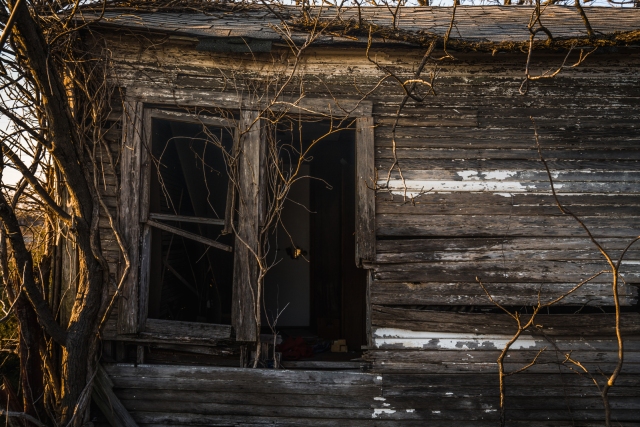
Picher’s pharmacist, Gary Linderman, is a well-known and respected man. Gary was even featured in the May 28, 2007 issue of People magazine in the Heroes Among Us article: “Prescription for Kindness.” Gary was dedicated to serving the people of Picher, helping anyone in need. He was a true doctor at heart. While he could have left to pursue work elsewhere, Gary vowed to remain in Picher until there was nobody left to help, and would be the last one to leave the city. Linderman remained in Picher until June 6, 2015, when he died of sudden illness. He was 60 years old.
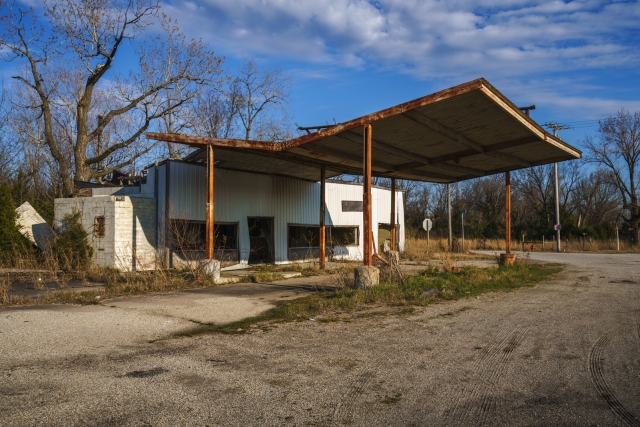
Make sure to check out the short video below:
Very often, I’m asked what gear I use for my photography, videography, etc. Questions ranging from what type of camera/cameras I use, what lenses I use, backpacks, memory cards, even what type of laptop I recommend, or what type of introductory camera I recommend…all that stuff, and more!
Well, of course I love to recommend camera gear or adventure gear that I trust and love, so at the end of each post I create here on my blog, I like to give a bit of a run-down on gear I use almost all the time!
So here it is! My entire (or most of it) list of photography/editing/adventure gear that I use.
My Camera (Sony a7riii) – https://amzn.to/2AFtzQv
Alternative Camera – https://amzn.to/2VHjR9h
Theta 360 Camera – https://amzn.to/2CaRwzm
Sandisk Memory Cards – https://amzn.to/2SN5sX6
Sony 16-35 4.0 – https://amzn.to/2HgLFhN
Zeiss 55 1.8 – https://amzn.to/2SK4Dys
Zeiss 85 1.8 Batis – https://amzn.to/2SNRQLm
Laowa 12mm 2.8 Zero-D – https://amzn.to/2AESLXD
My Favorite Backpack – https://amzn.to/2RKTi44
Tripod 1 – https://amzn.to/2SKxxON
Tripod 2 – https://amzn.to/2M2gUM6
MSI Laptop (great for editing, & much more) – https://amzn.to/2shGfZn
My e-books – https://amzn.to/2Bumcwo
Hardcover books and prints available at – www.oddworldstudio.com






What a tragic history — as if the literally life-threatening contamination weren’t enough, then there had to be a tornado! Once again you have transported me through your words and photos, Johnny … you’re extraordinary. Interesting also to see what gear you carry (nice rig!). But one more question, if you don’t mind: What precautions do you take when exploring contaminated sites like these, in which structures could collapse without warning?